You searched for: holocaust
<< Previous | Displaying results 901-925 of 1164 for "holocaust" | Next >>
-
Flag graphic for US 82nd Airborne Division
PhotoA digital representation of the United States 82nd Airborne Division's flag. The US 82nd Airborne Division (the "All American" division) was established in 1918 and fought in World War I. During World War II, they were involved in D-Day and Battle of the Bulge. The division also overran Wöbbelin, a subcamp of Neuengamme. The 82nd Airborne Division was recognized as a liberating unit in 1991 by the United States Army Center of Military History and the United States Holocaust Memorial Museum (USHMM).
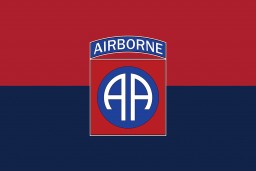
-
Flag graphic for US 83rd Infantry Division
PhotoA digital representation of the United States 83rd Infantry Division's flag. The US 83rd Infantry Division (the "Thunderbolt" division) was established in 1917 and fought in World War I. During World War II, they were involved in the Battle of the Bulge and captured the city of Halle. The division also encountered Langenstein, a subcamp of Buchenwald. The 83rd Infantry Division was recognized as a liberating unit in 1993 by the United States Army Center of Military History and the United States…
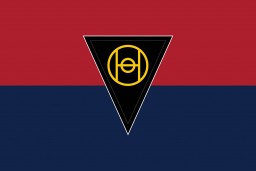
-
Flag graphic for US 84th Infantry Division
PhotoA digital representation of the United States 84th Infantry Division's flag. The US 84th Infantry Division (the "Railsplitter" division) was established in 1917. During World War II, they were involved in the Battle of the Bulge and captured the city of Hannover. The division also uncovered Hannover-Ahlem and Salzwedel, two satellite camps of the Neuengamme concentration camp. The 84th Infantry Division was recognized as a liberating unit in 1993 by the United States Army Center of Military History and…
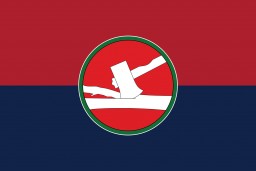
-
Flag graphic for US 86th Infantry Division
PhotoA digital representation of the United States 86th Infantry Division's flag. The US 86th Infantry Division (the "Blackhawk" division) was established in 1917 and fought in World War I. During World War II, they discovered the Attendorn civilian forced-labor camp. The 86th Infantry Division was recognized as a liberating unit in 1996 by the United States Army Center of Military History and the United States Holocaust Memorial Museum (USHMM).
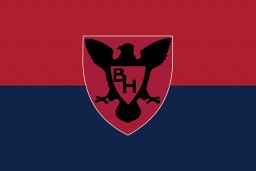
-
Flag graphic for US 89th Infantry Division
PhotoA digital representation of the United States 89th Infantry Division's flag. The US 89th Infantry Division (the "Rolling W" division) was established in 1917 and fought in World War I. During World War II, they captured the town of Eisenach and the city of Zwickau. The division overran Ohrdruf, a subcamp of Buchenwald. The 89th Infantry Division was recognized as a liberating unit in 1988 by the United States Army Center of Military History and the United States Holocaust Memorial Museum (USHMM).
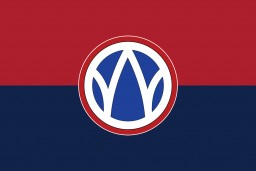
-
Flag graphic for US 8th Armored Division
PhotoA digital representation of the United States 8th Armored Division's flag. The US 8th Armored Division is also known as the "Iron Snake" or "Thundering Herd" division. During World War II, they liberated Halberstadt-Zwieberge, a subcamp of Buchenwald. The 8th Armored Division was recognized as a liberating unit in 1995 by the United States Army Center of Military History and the United States Holocaust Memorial Museum (USHMM).
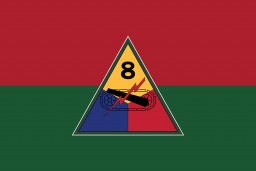
-
Flag graphic for US 8th Infantry Division
PhotoA digital representation of the United States 8th Infantry Division's flag. The US 8th Infantry Division (the "Golden Arrow" or "Pathfinder" division) was established in 1918 and fought in World War I. During World War II, they captured the cities of Rennes and Brest. The division also encountered Wöbbelin, a subcamp of Neuengamme. The 8th Infantry Division was recognized as a liberating unit in 1988 by the United States Army Center of Military History and the United States Holocaust Memorial Museum…
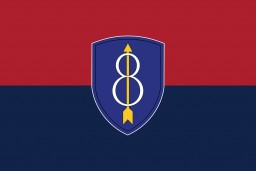
-
Flag graphic for US 90th Infantry Division
PhotoA digital representation of the United States 90th Infantry Division's flag. The US 90th Infantry Division (the "Tough Ombre" division) was established in 1917 and fought in World War I. During World War II, they were involved in D-Day and the Battle of the Bulge. The division also captured the city of Mainz and overran Flossenbürg concentration camp. The 90th Infantry Division was recognized as a liberating unit in 1985 by the United States Army Center of Military History and the United States…

-
Flag graphic for US 95th Infantry Division
PhotoA digital representation of the United States 95th Infantry Division's flag. The US 95th Infantry Division (the "Victory" Division) was established in 1942. During World War II, they captured the cities of Metz and Dortmund. The division also undercovered a German prison and civilian labor camp in Werl. The 95th Infantry Division was recognized as a liberating unit in 1995 by the United States Army Center of Military History and the United States Holocaust Memorial Museum (USHMM).
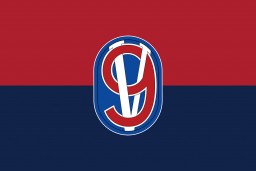
-
Flag graphic for US 99th Infantry Division
PhotoA digital representation of the United States 99th Infantry Division's flag. The US 99th Infantry Division (the "Checkerboard" or "Battle Babies" division) was established in 1942. During World War II, they were invovled in the Battle of the Bulge and liberated a Dachau subcamp near Mühldorf. The 99th Infantry Division was recognized as a liberating unit in 1992 by the United States Army Center of Military History and the United States Holocaust Memorial Museum (USHMM).
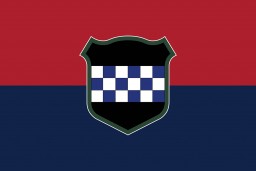
-
Flag graphic for US 9th Armored Division
PhotoA digital representation of the United States 9th Armored Division's flag. The US 9th Armored Division was known as the "Phantom" division. During World War II, they were involved in the Battle of the Bulge and also liberated Zwodau and Falkenau an der Eger, two subcamps of Flossenbürg. The 9th Armored Division was recognized as a liberating unit in 1993 by the United States Army Center of Military History and the United States Holocaust Memorial Museum (USHMM).

-
British soldiers transfer Jewish refugee children from the ship Theodor Herzl
PhotoIn April 1947, the British Navy intercepted the ship Theodor Herzl en route from Europe to British-controlled Mandatory Palestine. On board were hundreds of Holocaust survivors, including children, seeking a home. This photograph shows British soldiers transferring some of the Jewish refugee children to a vessel for deportation to Cyprus detention camps. Haifa port, British-controlled Mandatory Palestine, April 1947.

-
The Security Police (SiPo)
ArticleThe Security Police (Sicherheitspolizei, SiPo) was a German police organization created by Heinrich Himmler. Learn about its origin and role in the Holocaust.

-
Art and Survival: György Beifeld's Visual Memoir from the Russian Front, 1942–1943
ArticleGyörgy Beifeld, a Jewish conscript in the Hungarian army, created a visual memoir of his experiences on the eastern front in 1942–1943 as a member of a forced-labor battalion .

-
The Order Police
ArticleThe Order Police (Ordnungspolizei, Orpo) were Nazi Germany’s uniformed police forces. They became perpetrators of horrific crimes and played a significant role in the Holocaust.
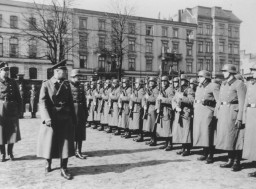
-
United States Immigration and Refugee Law, 1921–1980
ArticleUS immigration and refugee laws and policies evolved in response to World War I, the 1918 influenza pandemic, and World War II and the Holocaust. Learn more.
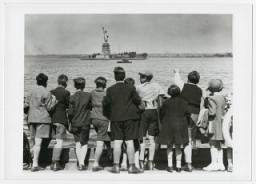
-
Nazi Racism
ArticleNazi racism and racial antisemitism ultimately led to mass murder and genocide. Learn more about Nazi racial ideology.
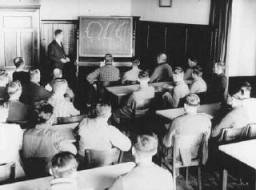
-
Bernburg T4 Facility
ArticleBernburg was the fifth of six centralized killing centers established by German authorities within the context of the Nazi “euthanasia,” or T4, program.

-
Estelle Laughlin
ArticleExplore Estelle Laughlin’s biography and learn about her experiences during the Warsaw ghetto uprising.
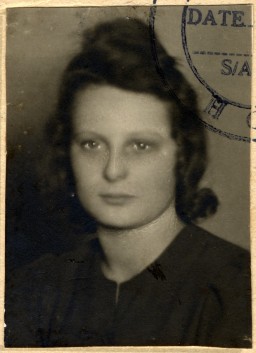
-
Erika Eckstut
ArticleExplore Erika Eckstut's biography and learn about the difficulties and dangers she faced in the Czernowitz ghetto.
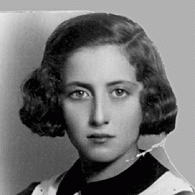
-
Thomas Buergenthal reflects on the value of truth commissions
Oral HistoryJudge Thomas Buergenthal was one of the youngest survivors of the Auschwitz and Sachsenhausen concentration camps. He immigrated to the United States at the age of 17. Judge Buergenthal devoted his life to international and human rights law. He served as chairman of the United States Holocaust Memorial Museum’s Committee on Conscience; was named the Lobingier Professor of Comparative Law and Jurisprudence at the George Washington University Law School; and served for a decade as the American judge at…
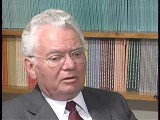
-
Leon Bass describes his knowledge of Nazi camps during and after World War II
Oral HistoryLeon Bass was born in Philadelphia, PA in 1925. He joined the US Army in 1943 and served as a member of the all-Black 183rd Engineer Combat Battalion attached to General Patton's Third Army. Leon's unit was involved in the Battle of the Bulge as well as the liberation of Buchenwald. After the war, Leon went on to receive his doctorate, teach, and speak about the Holocaust and racism. In this interview, Leon describes what he knew about Nazi concentration camps and the Holocaust during and after…
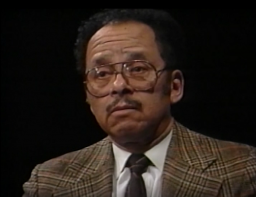
-
Freemasonry under the Nazi Regime
ArticleNazi propaganda linked Jews and Freemasons and claimed there was a “Jewish-Masonic” conspiracy. Learn more about Freemasonry under the Nazi regime.
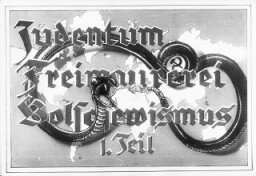
-
Martha and Waitstill Sharp
ArticleMartha and Waitstill Sharp, American Unitarian aide workers, helped thousands of Jews, intellectuals, and children in Prague, Lisbon, and southern France in 1939–1940.
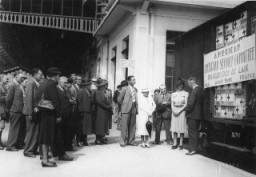
-
Elie Wiesel Timeline and World Events: 1928–1951
ArticleSurvivor Elie Wiesel devoted his life to educating the world about the Holocaust. Learn about key events in the world and his life from 1928–1951.

